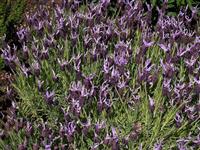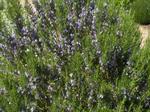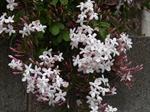
Grow Scented Plants
- Create a Sensory Garden
- Harvest and make Scented Products
Learn to identify, grow (propagation and culture), and use different
types of scented plants. You will find out how to harvest and dry
scented plants, and through practical assignments actually make a whole
range of exciting herb crafts (e.g. pot pourri, soaps, candles). Learn
also how to landscape a scented garden and expand your knowledge of
dozens of types of scented plants.
Employment Opportunities:
- Start your own business with scented plants
- Designing gardens with scented plants
- Work in a nursery or in landscaped gardens
- Working for a company that specialises in scented plant products
Lesson Structure
There are 8 lessons in this course:
- Introduction
- How Scented plants are used
- Types of scented plants
- Plant Naming System and pronouncing plant names
- Scented Plant Families
- Resources and Networking
- Plant reviews
- Culture
- Soils
- Soil Composition, soil types, improving soils
- Soil Mixes, potting media and component
- Plant Nutrients and fertilisers
- Plant Health -identifying and controlling problems
- Weeds and weed control
- Watering plants
- Planting, staking, mulching, pruning, protection from wind, salt air, etc.
- Plant reviews
- Propagation
- Methods of propagating this group of plants; creating a scented garden; growing in pots, inside, or in the open ground.
- Plant reviews
 Crafts from Scented Plants and Herbs
Crafts from Scented Plants and Herbs
- Herbs for cooking
- Howe to dry herbs
- Pot pourri, scented candles, tussie mussies, sachets, etc.
- Cosmetic uses -Hair rinses, baths, skin care
- Candle Making
- Exotic herb oils
- Scented Plants in Pots
- Lavender crafts
- Rose Crafts
- Plant reviews
- Harvesting and Processing
- Harvesting hints
- General rules for harvesting flowers
- Storing harvested material
- Freezing
- Deterioration
- Bud harvesting
- Shelf life
- Post harvest treatments
- Chemical treatments
- Harvesting and grading carnations
- Harvesting and drying lavender
- Harvesting Herbs
- Harvesting leaves, roots, fruit, seed
- Harvesting for medicinal use
- Plant reviews
- Commonly Grown Varieties
- Listing dozens of scented garden plants
- Several plants are dealt with in detail, including: Carnations, Roses, Gardenias, Heliotropium, Murraya, Pelargonium and Daphne
- Scented Flowers -Alstroemeria, Antihrrinum, Chrysanthemum, Freesia, Iris, Narcissus, Orchids, Matthiola,
- Plant reviews
- Other Important Scented Plants
- Lilium
- Fragrant Australian natives
- Boronia
- Other Scented Plants for Temperate Areas
- Plant reviews
- Commercial Applications
- The Business of Scented Plants
- The most commercially grown species
- Herbal Teas
- Production Plan
- Making a scented plant operation
- Standards
- Farm Layout
- Marketing your produce
- How to sell
- Creating a Scented Garden
- Drawing a Plan
- Garden Design
- Special Assignment
- Students must complete a special assignment on one selected plant or group.
Each lesson culminates in an assignment which is submitted to the school, marked by the school's tutors and returned to you with any relevant suggestions, comments, and if necessary, extra reading.
 Aims
Aims
- Know the plant naming system and the uses of scented plants, indicate the genus, species and variety in a selection of plant scientific names.
- There are many ways you might classify scented plants.
- By plant part -scented flower, scented foliage, scented fruit, scented root, etc.
- By plant group -scented bulbs, scented climbers, scented trees, scented shrubs, etc.
- By type of scent -strong scent, subtle scent, sweet scent, foul scent, etc.
- By use -edible herbs, plants for landscape use, for use in perfumes & cosmetics, etc.
- By plant family -plants which have similar botanical characteristics.
- Identify groups of scented plants according to families and the characteristics of those families
- Many scented plants tend to fall into one of the several particular plant families. By becoming familiar with these families, you will develop a foundation for understanding and identifying scented plants.
- Understand the cultural requirements of a range of scented plants
- Manage the health of Scented Plants
- Prevention is always the best cure. Try to keep the environment friendly to the helpful insects, a healthy soil structure with added compost, and maintain suitable environmental conditions for the plant. If you don’t have the right plant in the right place, they tend to struggle more.
- Heat, cold, wind, rain, frost, shade, pollution and other environmental problems can have disastrous effects on plants. Learn how it affects them.
- Harvest and process a range of scented plants.
- Make a range of products and uses from scented plants.
- dried herbs
- potpourri
- cosmetic products
- lavender crafts
- rose crafts
- other scented plant uses.
- Explain harvest and post harvest techniques for the production of scented crops.
- If you are to reap the benefits of quality produce, crops must be handled properly during harvest and post harvest. The various methods for harvesting herbs is mentioned.
- Identify and Cultivate a range of the most commonly grown scented plants
- Many scented plants are also commonly known as herbs however there are many that are not herbs but still have a wonderful scent and should be considered for inclusion in a scented garden
- Compare the cultural requirements of fifteen different scented Australian Native plants.
- Discuss commercial applications of scented plants.
- Many species of scented plants are grown commercially for their:
- Cut flowers, Oils, Foliage, Roots, and Tubers
- Some producers set up to specifically supply commercial growers (i.e. producers of oil or bulk flowers) with tube-stock or grow scented plants for specialist retail nurseries.
- Investigate operation options, farming options. How to do market research
- Plan the creation of a scented garden.
 What You Will Do
What You Will Do
- Make up a list of at least 50 sources of information, about the identification and use of scented plants.
- Obtain one soil sample typical of your local area; name the soil and test the drainage of the soil.
- Obtain (or make up) a potting mix appropriate for growing herbs in.
- Make up a propagating mix, appropriate for striking seed or cuttings in.
- Visit a nursery or garden growing scented plants.
- Obtain any materials which are needed for propagating scented plants by grafting, stem cuttings, root cuttings, aerial layering and seed.
- Harvest and dry parts from at least three different herbs.
- Make the following scented products: pot pourri, a cosmetic product, a herb vinegar, a herb salt and one other craft product.
- Create a bottle of either herbal oil.
- Prepare hot and cold herb teas.
- Prepare one edible product, using a part of a scented plant for flavouring.
- Produce one sample of a scented oil, using fresh harvested material from a scented plant.
- Visit a general nursery. Note what herb seeds, and herb plants are commonly available.
- Research the cultural requirements of some (or all) of the following genera: Viola, Viburnum, Lonicera, Jasminum, Daphne and Gardenia. Find information on Magnolias, Lilac,Conifers, Scented Camellias, Citrus, Convallaria (Lily of the Valley), Lilium, Hyacinthus, Forsythia and Michelia.
- Visit a scented garden.
- Visit and analyse the business operations of at least two herb enterprise.
- Design a garden featuring scented plants.
- Compare the commercial potential of three different types of herb enterprises, in your locality (based on the set task).
- Propagate a scented plant
- Review in detail, around 50 different scented plants.
Tips
- Keep different plant species with strong fragrances apart - if different scents are close together, they can combine and you may not be able to differentiate one from another.
- Don't plant species with strong fragrances next to those with weak
scents - some plants can stimulate the senses very strongly but others
are much more subtle. When strong and weak scents are brought together;
the value of the weaker one can be lost.
There is More to Scented Plants than Just a Nice Smell
Many fragrant plants have both scented flowers and leaves. Plants with only fragrant foliage have one main advantage over those with fragrant flowers - the fragrance is in the garden all year round.
Most of them also have one major disadvantage - the leaves must be brushed to release the fragrance.
When fragrant foliage is stood on, crushed, or in many cases just lightly brushed, aromatic oils are released into the air to create a fragrance in the garden. To get the full benefit of fragrant foliage, it needs to be planted alongside a path or somewhere where it will be brushed or bruised regularly.
Some however do release their scent on hot days without the need to crush foliage a good example is the curry bush (Helichrysum italicum) its scent intensifies as temperatures rise. There is nothing like fragrance drifting throughout a garden over summer and it becomes more intense in warmer weather.
Beware of Allergies
Some fragrant plants such as jasmine and honeysuckle can cause problems for allergy sufferers. Ask your neighbours before planting such things on a fence line). When using scented plants, it can be important to properly recognise the botanical chemicals, albeit natural, that you are introducing into your environment.
All the chemical compounds found in plants are derived from carbohydrates which are synthesised during photosynthesis. These compounds can be divided into two main groups: primary and secondary metabolites. Some chemicals may be both primary and secondary, so this grouping is a slight generalisation but it is a widely used method.
Primary Metabolites
These are found in all plant cells. They are used in basic plant processes and biochemical reactions concerned with growth and metabolism. They include fats, proteins, and carbohydrates. From a commercial perspective primary metabolites are harvested for use in large quantities as relatively low value raw materials for industry, or foods such as vegetable oils, as well as food additives such as proteins and carbohydrates like starch, cellulose and sucrose.
Amongst the primary metabolites, some have physiological influences on the human body but it is mostly secondary metabolites.
Secondary Metabolites
This is the group of most interest to us because medicinal plants have lots of these chemicals. In fact, it is the presence of secondary metabolites which give medicinal plants their name. There are thousands of these secondary metabolites. They are generally not involved in growth and metabolic processes but instead many of them are used by plants to fight against pathogens or to ward off attacks from herbivores - by being toxic or repellent to them. They therefore play a role in defence. Others may inhibit the growth of other competitor plants, and some are responsible for pigments and odours which attract pollinating insects to plants.
Secondary metabolites are derived from primary metabolites. There are different ways to classify them but one method which is widely adopted is to group them into alkaloids, phenolic compounds, and terpenoids. Alkaloids and phenolic compounds are synthesised by the shikimic pathway. Terpenoids are synthesised via the acetyl-CoA mevalonic acid pathway.